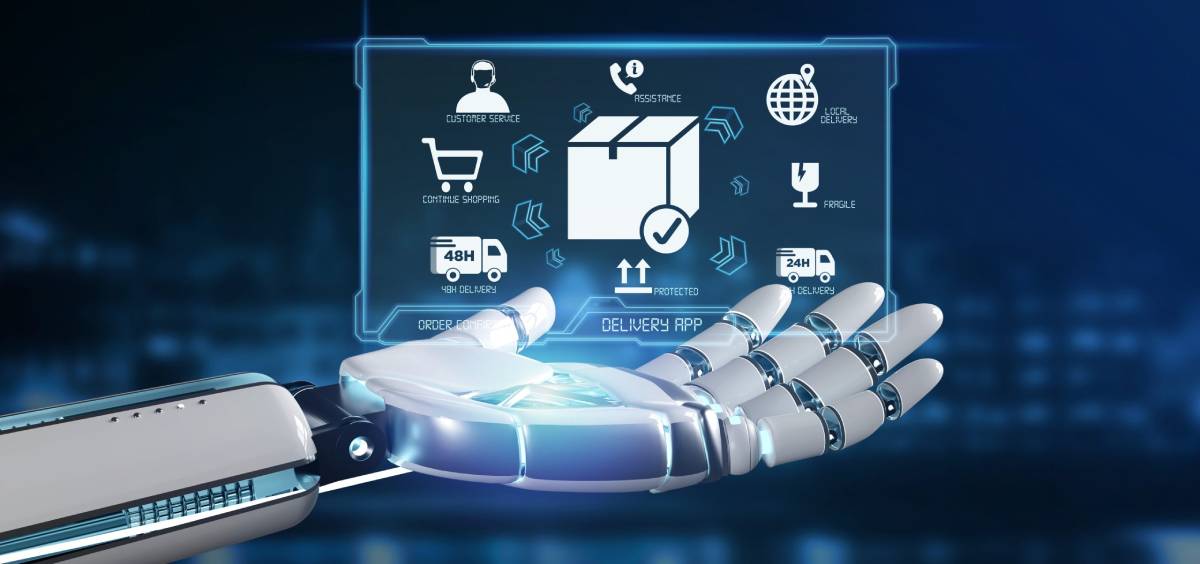
AI-Powered Demand Forecasting Tools: Revolutionising Supply Chain & Logistics
AI is changing the supply chain and logistics. It brings new levels of efficiency and precision. AI has many uses, but demand forecasting is key. It changes how businesses predict and manage sales and inventory. This blog looks at AI-powered demand forecasting tools. It covers their benefits, details, and the big impact they have on the supply chain and logistics.
AI can handle large amounts of data and spot hidden patterns, giving supply chain professionals tools that go beyond old forecasting methods. Customer expectations are rising, so supply chains must be faster, more flexible, and data-driven. AI forecasting tools help businesses thrive in today’s world. They help businesses see market changes, letting them adapt quickly and match supply to real demand.
The Significance of AI in Demand Forecasting
Demand forecasting is key in supply chain management. It helps businesses predict customer demand, allowing them to optimise inventory levels and streamline operations. Traditional forecasting methods depend on past data and manual analysis. They often struggle with accuracy and adaptability. These systems are often static, and they do not consider real-time factors that affect demand.
AI-powered demand forecasting tools use smart algorithms and machine learning. They offer better and more flexible forecasts. These systems get smarter as they learn from new data. They adjust to changes in buying patterns, seasonality, and market disruptions.
These tools use a lot of data, including past sales data, market trends, and outside factors, such as economic indicators and weather patterns. These factors help create accurate sales predictions. Some AI tools analyse social media feelings and global news. They help spot changes in demand before they happen.
AI in demand forecasting improves accuracy. It helps businesses respond quickly to market changes, leading to better supply chain efficiency. Agility is vital in fields like retail, healthcare, and manufacturing. Delays or errors in these areas can lead to big financial impacts.
Key Benefits of AI-Powered Demand Forecasting Tools
Enhanced Accuracy and Precision
A significant benefit of AI demand forecasting tools is their high accuracy. They provide precise forecasts that help businesses plan better. These tools analyse a lot of structured and unstructured data. They find patterns and correlations. As a result, they can predict demand better than traditional methods. This precision allows businesses to:
- Minimise forecasting errors
- Reduce safety stock buffers
- Avoid stockouts and lost sales
- Optimise replenishment cycles
With fewer mistakes, businesses can confidently make decisions about procurement and manufacturing. This helps ensure the right products are available when needed.
Real-Time Insights and Adaptability
AI tools give businesses instant insights into demand changes. This helps them adjust quickly to market shifts. Being adaptable is vital in today’s fast-paced business world. Consumer tastes and market conditions can change quickly. This happens because of economic ups and downs, new products, or moves by competitors.
For example, suppose a sudden spike in demand occurs due to a trending product on social media. AI systems can spot the pattern early and suggest changes to procurement or marketing strategies. This agility cuts delays and speeds up reaction times. It works better than manual forecasting.
Cost Reduction and Resource Optimisation
Better demand forecasting helps manage inventory well. This cuts costs linked to having too much stock and storage. Overstocking ties up working capital and raises the risk of obsolescence and markdowns.
It also reduces emergency shipments and last-minute changes, further lowering costs. AI systems can optimise labour allocation by predicting demand based on region, store, or channel. This helps make staffing decisions more precise.
By optimising resource use, businesses save money and boost profits.
Improved Customer Satisfaction

Meeting customer demand quickly and accurately is key to keeping customers happy. AI-powered demand forecasting tools help businesses predict what customers want. This ensures products are available across different channels. As a result, service levels improve, and customer loyalty grows.
Accurate forecasts lead to higher fill rates, fewer backorders, and timely delivery. Customers now expect these elements, especially in an age of instant gratification. In turn, happy customers drive word-of-mouth referrals and long-term revenue growth.
Additional Expert Tips & Common Mistakes to Avoid
Best Practices for Implementing AI-Powered Demand Forecasting
When implementing AI-powered demand forecasting tools, businesses should consider the following best practices:
- Data Quality and Integration: Ensure the forecasting data is accurate, complete, and well-integrated across all systems. Bad data leads to bad results, no matter how advanced the AI model is. Clean data from sales, promotions, weather, and logistics is essential for accurate predictions.
- Monitor forecasting models often: Make adjustments as needed to boost accuracy. AI models need updates when new data comes in to stay effective. Track performance using KPIs like forecast accuracy (FA), mean absolute percentage error (MAPE), and inventory turnover.
- Cross-Functional Collaboration: Encourage teamwork among sales, marketing, and supply chain. This helps make sure demand forecasts match business goals and strategies. Collaborative planning combines promotional activities, market expansion plans, and regional trends. This teamwork improves forecasting models.
- Pilot Program First: Test the AI system in a small area or product line. This lets you see how well it works and spot any challenges early.
Common Mistakes to Avoid
AI demand forecasting has many benefits. However, businesses may run into issues if it’s not done correctly. Here are some common mistakes to avoid:
- Don’t rely too much on technology: AI tools are strong, but they can’t replace human judgment completely. Forecasting needs context, like new laws, industry changes, or global tensions. This information might not show up in the data.
- Ignoring External Factors: If you focus only on past sales data, you may miss key issues, including the economy, competitor actions, and market trends. This can result in wrong forecasts. AI models should be supplemented with qualitative insights when necessary.
- Lack of Training and Support: Give employees proper training to use AI tools well. They also need to understand what these tools can do. Providing ongoing support and education is crucial for successful implementation. Resistance to change and lack of user engagement are common roadblocks to adoption.
Advanced Insights and Expert Recommendations
Leveraging AI for Strategic Decision-Making
AI can do more than just demand forecasting. It can help in supply chain and logistics, too. It offers insights that guide decisions at every level. For example, AI can:
- Recommend optimal pricing strategies
- Suggest vendor diversification during geopolitical instability
- Help identify demand shifts across channels (online vs. retail)
- Optimise transportation routes and warehouse stocking policies
These insights can help leaders move from reactive to proactive supply chain management.
The Role of AI in Predictive Analytics

AI demand forecasting tools are part of predictive analytics. Predictive analytics covers many different applications. Predictive analytics examines past data. It uses machine learning to forecast future outcomes. This helps businesses make wise choices ahead of time. In supply chain and logistics, predictive analytics can also be applied to:
- Estimate supplier lead times and variability
- Predict equipment maintenance needs
- Forecast shipping delays based on past delivery patterns
Businesses can create smart supply chains by using different predictive models. This allows them to spot problems before they happen.
Embracing AI as a Competitive Advantage
Businesses that use AI tools will have an edge in the market as AI grows. Early adopters gain faster innovation, better supplier ties, and improved customer experiences. AI not only enables better planning, it drives smarter execution.
The future is for companies that turn data into valuable insights fast and accurately. AI demand forecasting tools are now essential. They are a key asset that will shape success in supply chain management.
Conclusion: The Future of AI in Supply Chain & Logistics
AI demand forecasting tools are a big leap in supply chain and logistics management. These tools give businesses real-time insights into customer demand. This helps them optimise inventory planning, cut costs, and boost customer satisfaction. AI technology is evolving. Its role in supply chain and logistics will grow. This growth brings new chances for innovation and efficiency.
Businesses must use AI demand forecasting tools to succeed in a competitive market. AI helps companies change their supply chain operations. This drives growth and leads to long-term success. The future of supply chain and logistics is undoubtedly AI-driven, and the time to act is now.
Are you ready to harness the power of AI in your supply chain operations? Explore AI-powered demand forecasting tools. See how they can transform your business.